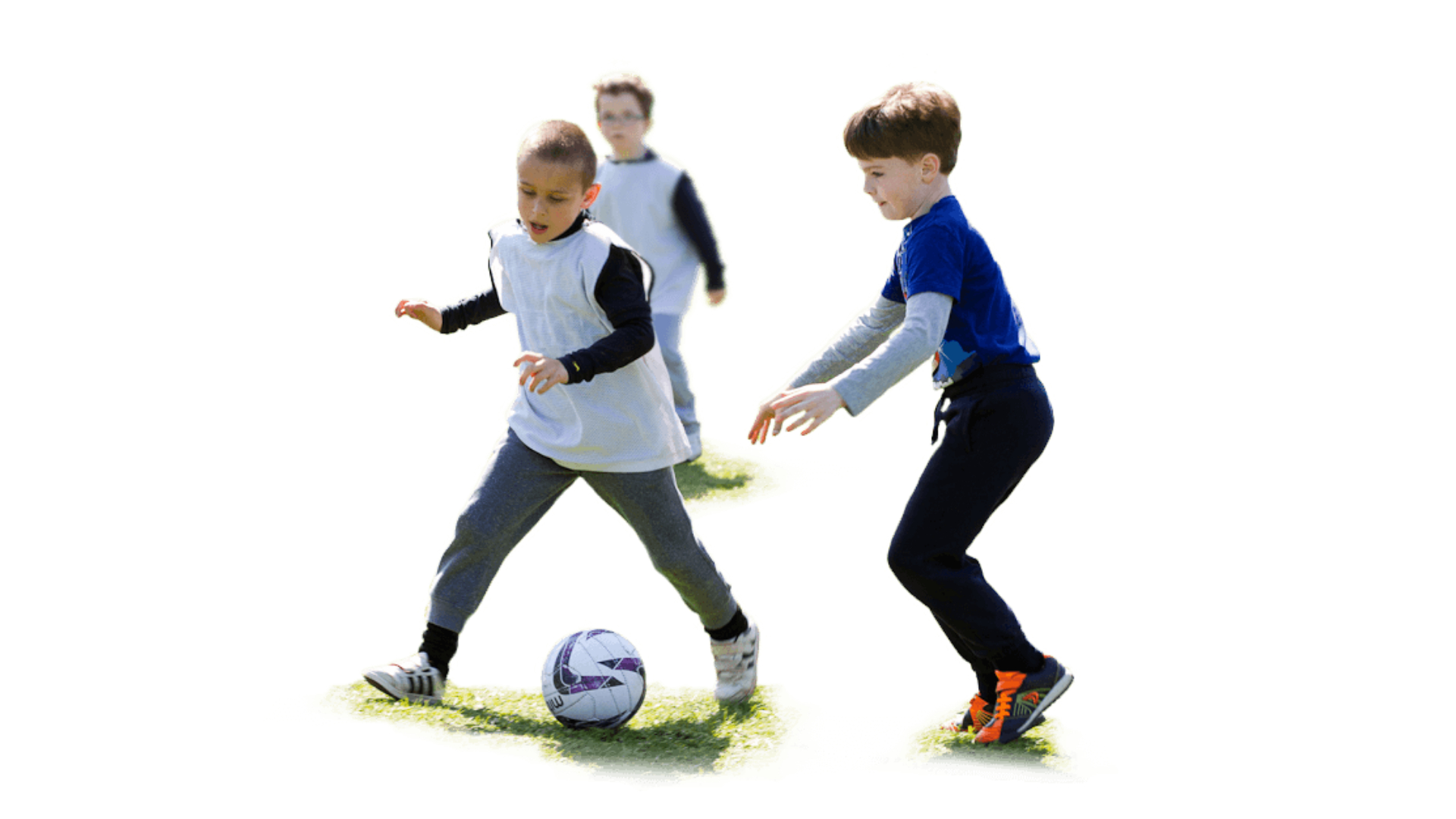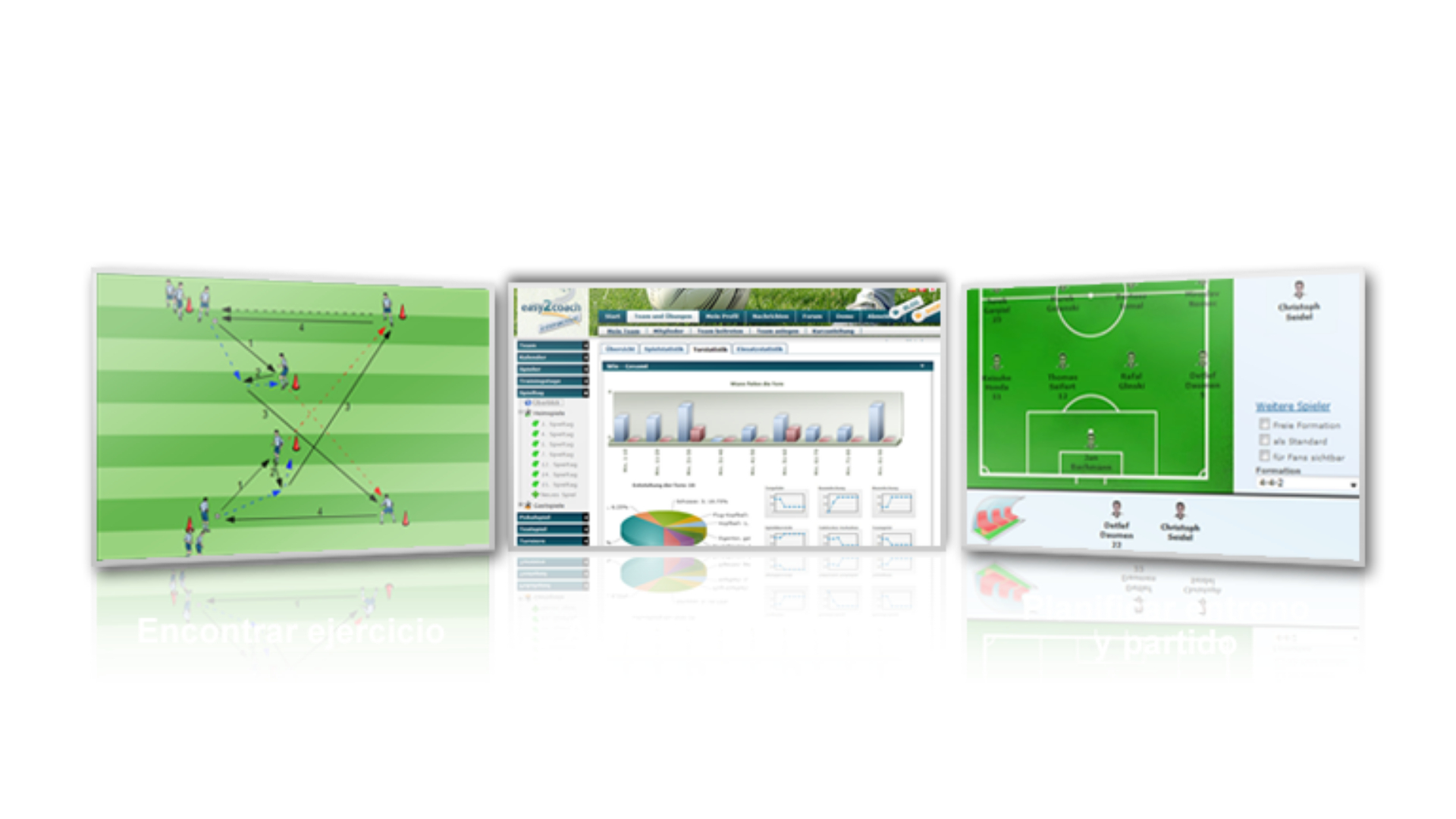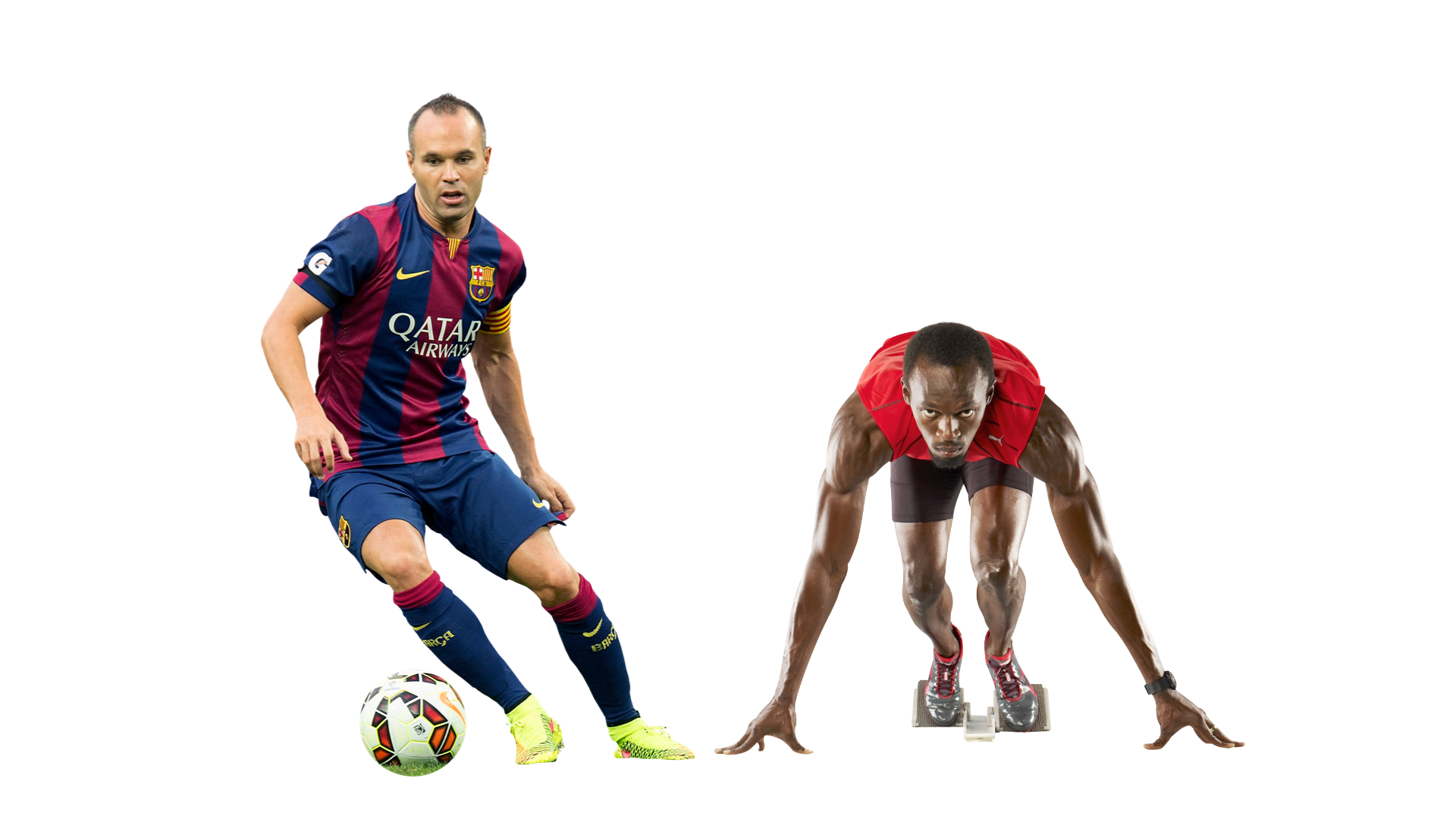METHODOLOGY
DIFFERENT STAGES IN FOOTBALL TRAINING

In general, the long-term stages of sports training are organized as follows in most sports disciplines:
- Phase 1: Regular and nonspecific sports practice (up to 6-8 years), in which the contents to work on would focus on basic motor skills (displacement, turns, balances, jumps and manipulation of objects) and extensive psychomotor training and varied, always through games.
- Phase 2: General multipurpose training (8-10 years) in which the predominant contents will be the work of specific motor skills, extensive coordination and perceptual training and rich technical experience. At these ages the child is in optimal physical and psychological conditions to achieve a correct learning of the technique and an adequate muscle development. At this stage we will build the coordinating and perceptual-decisional prerequisites necessary for comprehensive sports training.
To know the psychomotor characteristics of our players according to their age and the sensitive phases for the motor development of the different basic physical capacities are essential aspects that any coach should know in order to carry out a correct training planning and to favor the adequate sports development of your players. In the case of soccer, we will divide the player’s sports development into four main phases (basic psychomotor training, sports initiation, sports specialization and sports performance).
BASIC PSYCHOMOTIVE PHASE – 6 to 10 years
Children’s characteristics
- Start of school age
- There are no differences between boys and girls
- Very active behavior
- Enthusiasm for physical games and sports
- Good physical balance
- Very appropriate stage for physical learning due to its morphological characteristics (light, thin …)
- The nervous system is completed by 10 years
Contents that we must work
- Age favorable for the acquisition of motor skills (walking, running, jumping, throwing, receiving, hitting)
- Increase the repertoire of motor gestures
- Improve coordination skills
- Multidisciplinary training
Teaching methodology
- Integrative character
- Mainly use games
- Encourage the player to find solutions to different situations
- Pay attention to individual differences
- Order the training activities in a logical way:
- From easy to difficult
- From simple to complex
- Give positive feedback to children.
SPORTS INITIATION PHASE – 10 to 12 years
Children’s characteristics
- Second school age
- Increased growth in width
- Harmony in body proportions
- High body control
- Increased strength with respect to the slight increase in height and weight
- Excellent learning ability
Contents that we must work
- It is the best age to learn
- Teach basic and more elaborate sports techniques
- Expand the gestural repertoire. It is important that technical gestures are learned correctly
- Do not automate erroneous learning, since it will hinder later learning
- Begin to interrelate motor skills and coordinative skills
Teaching methodology
- Continue using games
- Influence the general and segmental dynamic coordination
- Adapt perceptual capacities to new temporal and spatial parameters
- Design tasks that help children to adapt their motor development to their growth and maturation
SPORTS SPECIALIZATION PHASE – 12 to 16 years
Children’s characteristics
- Morphological changes: sexual differences appear and childhood structures disappear.
- Great increase in height and weight.
- Psychological weakness and emotional instability
- Increased educational demands that increase the psychological pressure on the player
Contents that we must work
- Specialization by position in technical-tactical work
- Increase in the number of repetitions as a measure to improve gestures and improve physical condition.
- Facilitate varied learning situations.
- Increase the requirement in the effectiveness of gestures and tactical solutions.
- Physical work is carried out in conjunction with technical-tactical training.
- Increase the training volume.
Teaching methodology
- The great increase in height and weight causes a deterioration in the force-weight ratio, which causes a decrease in coordination.
- Increases the difficulty to control technical gestures, slows down the development of coordination.
- Maximum training capacity for physical condition.
- Difficulty in learning new technical actions and in consolidating and correcting technical elements already learned.
- Player restructuring stage
SPORTS PERFORMANCE PHASE – 16 to 18 years
Children’s characteristics
- Completion of the motor body and personality characteristics.
- Start of normal performance development.
- Height and weight parameters are stopped from 16 years of age.
- Balance in body proportions.
- Psychic stabilization and elevation of the intellectual level.
- Increases the ability to perceive and interpret the game.
Contents that we must work
- Second most suitable moment for learning
- Increases physical and psychological capacity, allowing to withstand greater training loads.
- End of adolescence, we can use more complex content and training methods typical of professional sports
Teaching methodology
- Specialized work on physical condition.
- Increases the volume and intensity of workouts.
- Maximum technical and tactical efficiency is reached.
- Training in specific game positions (specialization)
- We encourage the learning of situations similar to the real game.
- Amorrortu, J. M. (1996). La importancia de la técnica y su planificación en un trabajo de base. Training Fútbol, 5, 7-12.
- Arcelli, E. (2001). El trabajo táctico en adolescentes. Il Nuovo Calcio, 304,116-117.
- Azhar, A. (1997). Fútbol: iniciación y perfeccionamiento. Barcelona: Paidotribo.
- Bauerle, G. y Ueberle, H. (1988). Futbol. Barcelona: Martinez Roca
- Baur,J. (1991). Entrenamiento y fases sensibles. RED.Vol V, 3
- Bayer, C. (1986). Iniciación a los juegos deportivos colectivos. Barcelona:
- Martinez Roca. Benedek, E. (1994). Fútbol infantil. Barcelona: Paidotribo.
- Benitez, R. (1982). ¿Cuándo empezar la iniciación al fútbol? Entrenador
- Español, 13, 38-40. Berger,W, Minov,P. (1990). El macrociclo en la teoria del entrenamiento. RED Vol IV, 4 Blazquez, D. (1990). La iniciación a los deportes de equipo. Barcelona: Paidotribo. Blazquez, D. (1998). La iniciación deportiva y el deporte escolar. Barcelona: INDE Bonaccorso, L. (2003). Attenzione ai giovani. Il Nuovo Calcio, 126, 90-91.
- Bruggemann, D. (2004). Entrenamiento para niños y jóvenes. Barcelona: Paidotribo
- Buschmann, J., Pabst, K. y Bussmann, H. (2002). La coordinación en el fútbol. Madrid: Tutor Castelli, S. (2003). ¿Vencer o formar? Il Nuovo Calcio, 133, 36-40.
- Castillo, M. (1998). La fuerza en el futbotista. Bases fisiológicas y sistemas de entrenamiento aplicados a equipos de distintas edades. Fútbol. Cuademos técnicos, 11, 25-31
- Coca, S. (2003). La formación del futbolista: Primera parte. El Entrenador Español, 96, 12-17.
- Coca, S. (2003). La formación del futbolista: Segunda parte. El Entrenador Español, 97, 33-38.
- Coca, S. (2003). La formación del futbolista: Tercera parte. El Entrenador Español, 98, 12-19. Corbeau, J. (1990). Fútbol: De la escuela a las asociaciones deportivas. Leida: Agonos.
- D ́Ottavio, S. (2001). El Rendimiento del Jóven Futbolista. Barcelona: Editorial Paidotribo.
- Díaz, P (1995). Metodología en la iniciación deportiva. Fútbol, Cuadernos técnicos, 2, 51-60. Donatti, P. (1993). Algunos aspectos de la programación y la organización de la actividad infanto- juvenil en los centros de entrenamiento deportivo. Stadium,
- Fernández, S. (1998). El paso del jugador de base a la élite. Training Fútbol, 30, 16-24.
- Gagg,W.(1989). Tendencias y direcciones observadas en el fútbol juvenil internacional. Entrenador Español,43,14-20.
- Gil, P. (1995) Directrices metodológicas en el entrenamiento alevín e infantil. E/ entrenador español., 68, 48-58.
- Gracia, J. (1995). Características biofisiológicas de los deportistas de 10 a 14 años. Fútbol: cuadernos técnicos, 2, 67-71.
- Hahn, E (1987).Entrenamiento con niños. Barcelona: Edit.Martinez Roca
- Konzag, I. (1997). Entrenarse jugando. Barcelona: Paidotribo.
- Korcek, F. (1988). Tendencias actuales de la preparación deportiva de futbolistas jóvenes. Entrenador Español, 38, 51-55.
- Kutsar, L. (1992). Prerrequisistos hereditarios en la selección de talentos. Stadium , 156
- Lafont, T. (1987). Consideraciones sobre la problemática del fútbol-base. Entrenador Español, 31, 32-34.
- Le Boulch, J. (1991). El deporte educativo. Barcelona : Paidós.
- Manno,R.; Beccarini,C. y D ́Ottavio,S. (1993). La formación del joven jugador. Stadium , 160 Marin, J. (1992). Ejercicio fisico y deporte durante el crecimiento. Archivos de medicina del deporte. Vol IX , 34.
- Martin Acero,R. (1994) .Rapidez , aceleración y velocidad. RED. Vol VIII, 4.
- Martin, D. (1991). Técnica deportiva y teoria del entrenamiento. Stadium, 142
- Martin, D. (1992). Entrenamiento multilateral y especialización precoz. Stadium, 153
- Martínez, E. (2003). El futbolista durante su etapa en las escuelas de fútbol: propuesta sobre el trabajo en las fases sensibles. Training Fútbol, 88, 34-43.
- Mena, J. (1995). El entrenamiento integral para el fútbol iniciación. El entrenador español, 64, 23-35.
- Mombaerts, E. (2000). Fútbol: del análisis del juego a la formación del jugador. Barcelona: INDE
- Montoliu, J. (1988). El fútbol base. criterios para un desarrollo eficaz. Entrenador Español, 35, 42- 44.
- Nadori, L. (1991). Problemas pedagógicos de la especialización y promoción del talento en el deporte. Stadium, 151
- Navarro, F. (1989). La planificación del entrenamiento a largo plazo. Apunts, 10
- Navarro, F. (1999). Evolución de las capacidades físicas y su entrenamiento.
- Master en Alto Rendimiento Deportivo. Madrid: COE
- Otero, F. M. (2003). La planificación en el Fútbol Base: desde una filosofía general hasta un modelo de sesión. Fútbol: Cuadernos Técnicos, 25, 41-48.
- Pacheco, R. (2001). O ensino do futebol- Porto: edición del autor
- Pérez, J. (1994). Hacia una formación específica del futbolista. El entrenador español, 63,51 -58.
- Pérez, L. (1998). Iniciación deportiva en la edad infantil. El entrenador español, 76, 18-27.
- Raya, A. (1988). Bases y principios en la formación de un jugador de fútbol. Entrenador Español, 37,22-27.
- Rinaldo, L (2001). Comparación entre tas diferentes escuelas del Calcio. Il Nuovo Calcio, 112, 58-66.
- Rusch, H. y Weineck, J. (2004). Entrenamiento y práctica deportiva escolar. Barcelona: Paidotribo
- Salvador, J. (2003). Fútbol Base: Un método para la enseñanza del juego. Training Fútbol, 92, 26- 37.
- San Martín, J. L. (1990). Orientaciones sobre la preparación física en edades jóvenes. Entrenador Español, 44, 24-26.
- Sans, A. y Frattarola, C. (1993). Entrenamiento en el fútbol base. Barcelona: Paidotribo
- Sans, A. y Frattarola, C. (1998). Futbol base: Programa de entrenamiento para la fase de tecnificación. Barcelona: Paidotribo.
- Scholz, W. (1988). Bases teóricas del entrenamiento con jóvenes. RED. Vol II, no 1.
- Stahl, F. (1992 ). Los niños son algo más que pequeños adultos. Revista de Educación Física. No 13
- Tschiene, P. (1992). Por una teoria del entrenamiento juvenil. RED. Vol VI, 1.
- Tschiene,P. (1986). Los problemas actuales del entrenamiento de los jóvenes deportistas. Stadium, 116 y 117.
- Vankersschaver, J. (1982). Football: La formation à l ́ècole ou au club, EPS, 177, 58-61
- Vargas, J. (1994). Secuencia metodológica en el aprendizaje de la técnica en el fútbol. El entrenador español. Cuaderno del entrenador, 63, 16-25.
- Vázquez, E. (2000). Síntesis de la preparación física integral en las etapas de formación del fútbol base. El entrenador español, 8 47-58.
- Wanceulen, A. (1997). Estructuración metodológica de la sesión de entrenamiento en el fútbol base. Fútbol: cuadernos técnicos, 7, 5-18.
- Wanceulen, A.(1995). Las escuelas de fútbol: pasado, presente y futuro. Fútbol: cuadernos técnicos, 1,30-35.
- Wein, H. (1995). El fútbol a la medida del niño. Madrid: RFEF-CEDIF.
- Wein, H. (1999). El fútbol a la medida del adolescente. Sevilla: FAF-CEDIF





